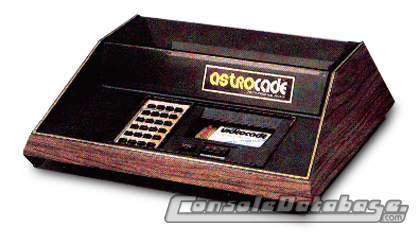![]()
http://www.consoledatabase.com


The Bally Professional Arcade's beginnings date back to the late 1970s when Midway Manufacturing (the video game division on Bally) contracted Dave Nutting Associates to design a video display chip for use in their arcade and video game systems. Powered by a Zilog Z80 processor, the system he developed is still considered one of the most powerful systems in the 8-bit generation and was used in most of Midway's classic arcade games (such as Gorf).
This same system was used in the Bally Professional Arcade, although not to the same extent as in the Arcade machines as the Professional Arcade only allowed for the low-resolution mode of the system and not the high- and low-resolution modes available in the Arcade machines. The Bally Professional Arcade itself was designed by a team at Midway, and originally named the "Bally Home Library Computer" and only available through mail order upon its release in 1977. Delays in the production menat that none of the units were actually shipped until 1978. By this time the system had been renamed the "Bally Professional Arcade" and was now available in retail stores (mostly computer stores) and had little publicity when compared to the Atari Video Computer System.
Due to such competition, the system was withdrawn in 1979 and Bally decided to sell off their Consumer Products Division, including development and production of the console. By this point, a dedicated user base had grown who saw the system's potential through the Basic Programming cartridge. A group of them bought the rights to the system off Bally in 1980 and set up a company called Astrovision. They re-introduced the system in 1981 as the "Bally Computer System", which came with a free Basic Programming Cartridge. In 1982, they changed the system name to "Astrocade" and continued production until about 1985, when it was discontinued after the video game crash of previous years.
Due to the bitmap structure of the system, this allows for 4 colour settings, however, by dividing the screen with a left/right boundary control byte, 2 sets of colours could be used on the 1 screen.
The system uses custom cassettes for its programs which were designed similar to audio cassettes (same dimensions). The system displays a menu showing the system's built-in programs (2 games, a calculator and a drawing program) as well as the contents of the inserted cassette. The controllers are pistol-shaped with a trigger with a knob at the top which acts as a paddle and short-throw joystick. These controllers are very responsive when compared to other systems controllers of the time.
There were quite a few games produced for the system, some which were programmed in Bally/Astro Basic. These Basic games were found to be a little slow at times, which prompted production companies to use Machine Language routines from the built-in games to power their games - a hybrid programming method that produced good results using the limited amount of space available in the unit. Other games were entirely written in Machine Language. Hiding the Machine Language code at the bottom of the screen by reducing the vertical resolution would allow 4-8 colours to be displayed on-screen (the same quality as a cartridge game).
Platform: Bally Professional Arcade/Astrocade.
Copyright © 2000 - 2024 Base Media. All Rights Reserved. Console Database is a trademark of Base Media. Designated trademarks and brands are the property of their respective owners. Use of this Web site constitutes acceptance of the Base Media User Agreement and Privacy Policy. Our other sites: Deals United - Daily Deals Aggregator and WhichPlug? - Travel Adaptor Finder.